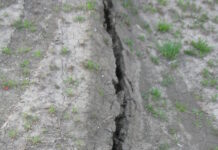Photo credit: DiasporaEngager (www.DiasporaEngager.com).
In a dramatic preemptive strike, the IDF flew into Lebanon just before dawn on Sunday and destroyed a massive Hezbollah missile and drone force just minutes before it left the ground. So far, news in English has been at best incomplete and at worst outright misleading. It’s important to note that even though Israelis are using the words, “preemptive strike,” Israel did not start nor escalate these hostilities. Below is a detailed account, analysis, and predictions for the coming days, based on the best information available at this time.
Hezbollah’s attack, which was reportedly intended to launch at 5:00 AM, included thousands of rockets, missiles and drones: among them several dozen long range guided missiles aimed at the “Gush Dan” area of central Israel, which includes Tel Aviv and Ben Gurion Airport. Yet at 4:40 AM, just minutes before the intended strike, some hundred Israeli fighter jets and an unknown number of helicopters flew multiple sorties deep into Lebanon, destroying nearly all the projectiles before they left the ground. A relatively small number of rockets hit parts of northern Israel: Hezbollah claims it succeeded in firing 320 projectiles and “successfully” completed the “first phase” of its revenge for Israel’s assassination of Hezbollah military chef Fuad Shuk in Beirut last month.
Despite Hezbollah’s claims of victory, the IDF has demonstrated two dramatic capabilities: the first is strong intelligence. Israel not only identified the intended strike before it occurred, but also pinpointed the exact location of individual rocket and drone launchers on the ground. The second capability is the Israeli Air Force (IAF)’s effectiveness: flying into Lebanon as if Hezbollah’s air defenses simply did not exist at all, carrying out a huge operation in multiple sorties, and then returning home with reportedly no IDF casualties, injuries, or equipment damage.
So far there has been no unusually large call-up of reserves, indicating that Israel is not likely proceeding toward a ground campaign at this time. Yet many Israelis believe an all out war in Lebanon to be inevitable and perhaps even desirable: with the entire north of Israel uninhabitable under an unending barrage of Hezbollah rockets, some 60,000 Israelis living for almost a year as “internally displaced persons” (effectively refugees in their own country), and Hezbollah’s range of destruction constantly expanding. Logically there are only two possible outcomes: a political solution, or a full scale war.
Hezbollah, which answers to Iran, has made it clear that the terror group will not agree to any negotiated solution until after Hamas agrees to a permanent ceasefire with Israel in Gaza. Yet recent events (including a round of fresh refusals just in recent days) indicate that Hamas is not likely to agree to any offer in the near future. This eliminates a political solution, leaving only the military option.
The military option in Lebanon will not be some kind of “Gaza Part II” but far more destructive. In a single day, Hezbollah can fire more rockets than Hamas did in an entire month, enough to overwhelm the Iron Dome missile defense system. An estimated 10% of Hezbollah’s arsenal is high yield, long range, precision missiles — capable of taking out electricity, communications, water, roads (that transport food), and, of course, large numbers of Israeli civilians. Israel had the luxury of warning Gaza’s civilians to evacuate before striking rocket launchers in civilian areas, leading to the lowest civilian to combatant casualty ratio for a conflict of this type in human history. Without the protection of Iron Dome, that kind of restraint will not be an option in Lebanon, where every moment of delay could mean the death of thousands of Israelis. Yet Hezbollah hides its munitions under densely populated civilian areas, such as Beirut, meaning that casualties could be far higher than in Gaza, and the Israeli home front will face a much greater burden than it has over the past 11 months.
Despite the high tensions, it does not seem likely that recent events will escalate into a regional conflict or a world war. Iran has demonstrated time and again that it will freely endanger its proxy states and their civilian populations, but will not risk its home front unless attacked directly. For example, Iran’s attack on Israel last April came in the wake of an Israeli strike on elite Iranian Revolutionary Guard Corps commanders in Syria, and not in response to Israeli operations in Gaza or Lebanon. Russia and China have consistently confined themselves to “behind the scenes” support roles, and are equally unlikely to take direct military action for Hezbollah’s benefit. Finally, the United States has a massive force in the region, including missile defense and attack capabilities. Although America has been notoriously shy about taking offensive actions, even in response to recent Iranian strikes that killed US troops, America’s defensive capabilities have nonetheless proved impressive, and even its aversion to offense could change at any time.
As I mentioned earlier, it’s important to note that even though Israelis are using the words, “preemptive strike,” Israel did not start nor escalate these hostilities. To the contrary, Israel has demonstrated astounding restraint, as it has been under relentless attack for 11 months, and has acted only responsively. If it were not for Israel’s Sunday operation in Lebanon, it is likely that hundreds or even thousands of Israelis could have died.
Daniel Pomerantz is the CEO of RealityCheck, an organization dedicated to deepening public conversation through robust research studies and public speaking.
Source of original article: Daniel Pomerantz / Opinion – Algemeiner.com (www.algemeiner.com).
The content of this article does not necessarily reflect the views or opinion of Global Diaspora News (www.GlobalDiasporaNews.com).
To submit your press release: (https://www.GlobalDiasporaNews.com/pr).
To advertise on Global Diaspora News: (www.GlobalDiasporaNews.com/ads).
Sign up to Global Diaspora News newsletter (https://www.GlobalDiasporaNews.com/newsletter/) to start receiving updates and opportunities directly in your email inbox for free.




























